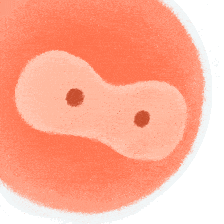In terms of incidence, comparing to tumours of the lung, colon, breast and prostate, those in the head and neck (H&N) region are rather uncommon. If you ask me to name some H&N cancers, I would think of those of the nasopharynx, thyroid, oesophagus and tongue. According to some statistics presented by the charity Cancer Research UK, in a given year, of all new cancer diagnoses in the UK, about 3% are in the H&N (12238 cases recorded between 2015 and 2017). Among all H&N cancer sufferers, most are over 50 years old, and 70% are male.
Tumours hiding in the parapharyngeal space are even rarer. Some literature suggested only 1% of H&N tumours (benign and malignant combined) are found in that inverted pyramid-shaped cavity.
It dawned on me that I’ve won the genetic lottery “jackpot”! Oh wow!
Or for some people, this experience may remind them of another “jack” —— Jack-in-the-box. Surprise!
What is the chance of this random genetic mutation happening in the parapharyngeal space of a forty-something-year-old female to drive the growth of a very rare kind of tumour?
Infinitesimal! But yes, very rare events can and do happen.
There’s some good news though —— around 80% of tumours in the parapharyngeal space were benign, so there’s a good chance that mine also was! “Lightning doesn't strike the same place twice”, right? (OK, scientifically this actually is not true, but let’s not get into that here, ha!) Other people got cancers, I only had a tumour, it’s not that bad, “relax”, I told myself.
Since my condition is so rare, most ENT specialists would only see a handful of cases in their entire professional career. Which makes me wonder, during my emergency referral, how the consultant surgeon managed to give me the preliminary diagnosis at the spot so effortlessly, with such confidence and authority, without having to consult any medical literature? Amazing!
Winning the “jackpot” was unexpected, just as I wouldn’t expect to get the top prize straightaway in the upcoming draw if I purchase a lottery ticket today.
Were there really not the faintest hint beforehand, friends and family asked?
Well, yes, there were hints. However, the symptoms were mild and intermittent, with plausible explanations for them all, so I didn’t think much of them and certainly didn’t attribute them to the presence of a tumour.
Around two months prior to spotting the tumour, as I woke up every morning, I started noticing a dry mouth, especially the tongue. It was late autumn, so I blamed that on the central heating being too strong and the humidity too low. Then there were a few episodes of nerve pain in my left ear, each lasting a second or two. My hearing seemed fine afterwards, so I just left it as that. I also had problems with a slightly blocked nose on the left side, as well as an “aeroplane ear” on my left that took ages to subside after each flight. Since I had had a rather bad cold that autumn, I put those down to a lingering cold that I hadn’t yet shaken off.
Hindsight is a wonderful thing. By now of course I know the oral dryness was the result of my tongue’s surface fitting too nicely to the bulging soft palate, blocking the flow of saliva. As for the pain and feelings of obstruction, they were the result of the tumour pushing onto soft tissues around it. The only structures which withstood the pressure from the tumour were the hard bones.
I had the MRI scan on Valentine’s Day. So I, the biologist, spent the day with the tumour, thinking about how it all started, how it quietly took on a life of its own while I whizzed through my hectic days, and lamented how come we hadn’t met sooner. How “romantic”!
The imaging technicians were all softly spoken and kind. Professional rules prohibit them from discussing or sharing the images with patients, just in case some patients take the information the wrong way, either be happy too soon or worried about something that turned out to be a false alarm. The responsibility of analysing the scan images, considering all evidence and coming up with a diagnosis lies with the consultant surgeon that I would be assigned to.
Having said that, with all the scans carried out every day, technicians must from time to time encounter some images which even to the layman eye look pretty worrisome? One can’t really “unsee” them, can you? I guess it's difficult not to have one's heartstrings tugged by some tragic cases.
What did my scans show? It was a two-week wait before I got to meet the consultant responsible for my case.
